Lake Champlain
Tuesday, September 12, 2006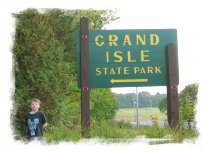
Champlain is a long thin lake, and provided a natural transportation corridor from Canada (the northern terminus is around Montreal). The lake forms the boundary between New York and Vermont. Other than Burlington, which is the largest town in Vermont, and Plattsburg, NY there isn’t much up here –just some small villages. We are camping at Grand Isle State Park and it’s a quiet spot out in the middle of the lake. The islands are mostly farmland, with some small villages.
There are only a couple of bridges across the lake, and they are widely separated, so most crossings of the lake are done by ferry. Every 20 miles or so is a ferry crossing, run by the Lake Champlain Transportation Company. The ferries date back to sailing rafts, including one ferry powered by 6 horses on a treadmill!
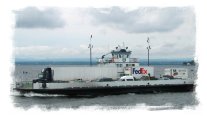
It’s a fun trip across the lake – you can see the Green Mountains of Vermont to the east and New York’s Adirondack Mountains to the west, and there is a hint of fall color on the shorelines.
There is a lot of military history on the lake. During the revolution, the British Military was thwarted from splitting the rebellious New England colonies off from New York and the rest of the colonies by the fortifications along the Hudson Highlands (see West Point). Deciding on an alternative strategy of invading from Canada, the British hoped to come down Lake Champlain and link up with their forces in New York City, thus splitting the colonies.
Control of the lake was critical to this effort. Benedict Arnold, although seriously outnumbered in ships (52 to 12) was able to do enough damage to the British Fleet (well, mostly small gunboats) at Valcour Island to delay the British advance down the lake until winter came. This delay made possible the American victories at Bennington, Ticonderoga and Saratoga, and convinced the French and Dutch that the colonists might actually have a chance, and opened up their purse strings to the fledgling American government.
Another large navel engagement occurred during the War of 1812. Most of this war was fought along the Great Lakes and Lake Champlain, with the exception of the famous Battle of New Orleans. Over winter, both sides engaged in a furious set of shipbuilding on the lake. This time, both sides had frigate sized ships (if you have seen the movie Master and Commander, the Surprise is a 28 gun Frigate. The American’s had a 38 gun frigate at the Battle of Plattsburg.). It’s fairly amazing to imagine sailing ships of this size on the lake – although long, it’s usually only 2-4 miles wide).
The American strategy at the Battle of Plattsburg was similar to Benedict Arnold’s nearly 40 years before - get in a protected position, and let theBritish come to them. This resulted in a decisive American victory at Plattsburg.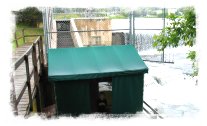
The lake is full of curiosities, none more than Fort Montgomery, a.k.a. Fort Blunder. When constructed by the Americans, the surveying was a little sloppy, and the fort was accidentally constructed just over the Canadian boundary! The walls of the fort are still there. Also the islands in the middle of the lake were the site of several nuclear missile silos constructed in the 1960’s, now removed and replaced with a Vermont Visitors Center. We also came across an early fish ladder to enable the salmon to get around a dam for a millpond.
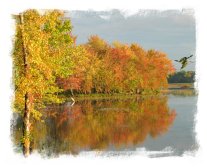
The fall colors usually start with the low lying ‘swamp’ or ‘bog’ maples. The shores of the lake are lined with colorful trees, and at the end of the day, when the wind dies down, the glow of the trees in the sunlight and the reflection on the water is quite beautiful.

Vance: Lake Champlain is a very big lake. There was a small playground at our campground, Grand Isle S.P. First we drove around the lake back onto the
New York side. We washed our clothes at Plattsburgh where a battle of the war of 1812 was fought. Ethan Allen and his Green Mountain Boys lived in Vermont. Next we rode a ferry back into Vermont.
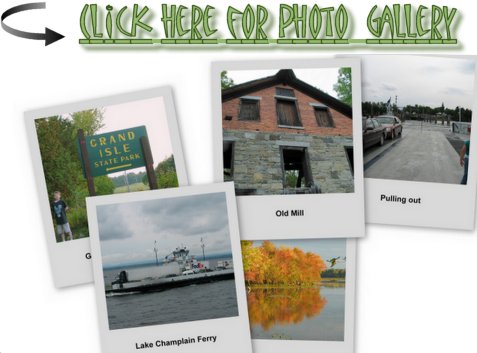







<< Home